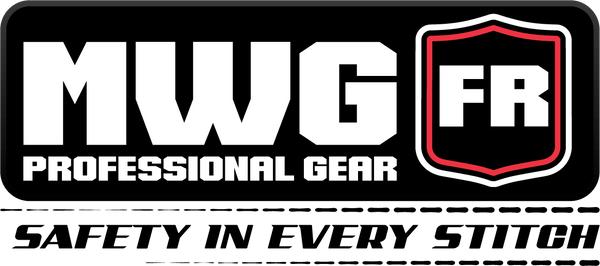In work environments where the risk of an arc-flash or flash-fire incidents is a concern, protective clothing is not just a necessity but a vital requirement. Flame-resistant (FR) clothing is designed to provide a layer of defense against arc-flash related injuries. Within the realm of FR clothing, there are two main categories: inherent FR clothing and treated cotton FR clothing. While both types offer protection, they differ significantly in terms of their composition, performance, and suitability for various scenarios.

Understanding Inherent FR Clothing
Inherent FR clothing is made from inherently flame-resistant fibres, meaning the flame resistance is in the fabric's molecular structure. This results in clothing that doesn't rely on chemical treatments for its fire-resistant properties. Inherent FR clothing is known for its exceptional durability, as the flame-resistant properties are permanent and won't diminish over time.
Benefits of Inherent FR Clothing:
Durability: Inherent FR clothing is highly durable and can withstand numerous washes and wear without losing its flame-resistant properties.
High-Performance: Inherent FR clothing offers consistent protection in high-risk environments without relying on treatments.
Breathability and Sweat-Wicking: Many inherent FR fabrics, including MWG FLEXSAFE and MWG COMFORT WEAVE, are designed to provide breathability and moisture-wicking properties, making them more comfortable for extended wear.
Longevity: Due to its permanent flame resistance and composition, inherent FR clothing is well-suited for long-term use without compromising safety.
Understanding Treated Cotton FR Clothing
Treated cotton FR clothing, on the other hand, is made from cotton-based fabrics that has been treated with flame-resistant chemicals. These chemicals create a protective layer on the fabric's surface, offering resistance in an arc-flash or flash-fire event. Treated cotton FR clothing is often more affordable upfront compared to inherent FR clothing.
Benefits of Treated Cotton FR Clothing:
Affordability: Treated cotton FR clothing, like MWG COTTON COMFORT, is generally less expensive to produce, which can be an advantage for companies seeking cost-effective solutions.
Breathability: Cotton-based fabrics tend to be breathable providing comfort in warmer conditions.
Stretch and Comfort: Treated cotton FR clothing can retain the natural stretch and comfort of regular cotton, making it more comfortable for tasks that require movement.
Choosing the Right Type for the Job
When deciding between inherent FR clothing and treated cotton FR clothing, the nature of the work environment and the workforce's needs play a critical role.
For Long-Term Use: Inherent FR Clothing
In scenarios where durability and long-term performance are essential, inherent FR clothing stands out as the superior choice. Industries with operations that require consistent protection and extended use, such as electrical utilities, mining and manufacturing, can benefit from the longevity and reliability of inherent FR clothing.
For Transient Workforce: Treated Cotton FR Clothing
Industries that involve a transient workforce or seasonal activities might find treated cotton FR clothing to be a more practical option due to its affordability. Construction sites, electrical contractors, and short-term projects can benefit from the cost-effective protection provided by treated cotton FR clothing.
How to decide
The choice between inherent FR clothing and treated cotton FR clothing is not a one-size-fits-all decision. Each type has its strengths and weaknesses, catering to different industry needs and workforce requirements. While inherent FR clothing offers unmatched durability and performance, treated cotton FR clothing provides an affordable solution for short-term or transient workforces. Understanding the differences between these two types of FR clothing is crucial for making an informed choice that ensures the safety and well-being of workers in hazardous environments.
